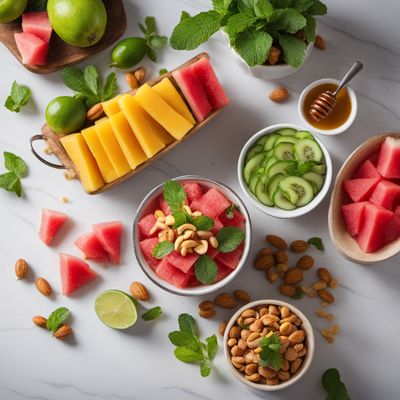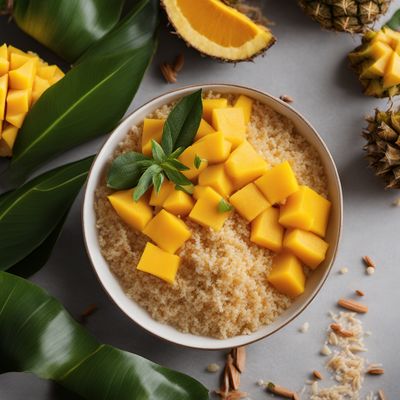
Ingredient
Passionfruits
The Exotic Delight: Passionfruits
Passionfruits are small, round fruits with a tough outer skin that ranges in color from purple to yellow. Inside, they contain a jelly-like pulp filled with black seeds. The pulp has a sweet-tart flavor that is both refreshing and tangy. Passionfruits are often used in desserts, beverages, and tropical-inspired dishes.
Origins and history
Passionfruits are native to South America, particularly Brazil and Paraguay. They were named by Spanish missionaries who believed the flower's structure resembled the Passion of Christ. Today, passionfruits are cultivated in tropical and subtropical regions around the world, including Australia, New Zealand, and Southeast Asia.
Nutritional information
Passionfruits are a good source of vitamins A and C, as well as dietary fiber. They are also low in calories, with approximately 17 calories per fruit. Additionally, passionfruits contain antioxidants that help protect the body against free radicals.
Allergens
Passionfruits may cause allergic reactions in some individuals, particularly those with a latex allergy. It is advisable to exercise caution and consult with a healthcare professional if you have any known allergies or sensitivities.
How to select
When selecting passionfruits, look for fruits that are heavy for their size and have a slightly wrinkled skin. This indicates ripeness. Avoid passionfruits with blemishes, mold, or overly soft spots. The skin should be vibrant in color and free from any signs of shriveling.
Storage recommendations
To prolong the freshness of passionfruits, store them in a cool, dry place, away from direct sunlight. If the fruits are ripe, they can be stored in the refrigerator for up to a week. However, it is best to consume passionfruits as soon as possible to enjoy their full flavor and texture.
How to produce
Passionfruit vines can be grown in warm climates or in greenhouses. They require well-drained soil and full sun to thrive. Passionfruits are typically propagated from seeds or cuttings. Regular watering and fertilization are necessary for optimal growth and fruit production.
Preparation tips
To prepare passionfruits, simply cut them in half and scoop out the pulp with a spoon. The pulp can be eaten as is or used as a topping for desserts, salads, or yogurt. The seeds are edible and add a crunchy texture to dishes. Passionfruit juice is also a popular ingredient in cocktails and tropical beverages.
Culinary uses
Passionfruits are commonly used in desserts such as mousses, tarts, and pavlovas. They are also used in beverages like juices, smoothies, and cocktails. In savory dishes, passionfruits can be used as a marinade or sauce for meats, seafood, or salads.
Availability
Passionfruits are commonly available in tropical and subtropical regions, including South America, Australia, New Zealand, and Southeast Asia.
More ingredients from this category
Recipes using Passionfruits

Zambian Fruit Salad
Tropical Delight: Zambian Fruit Salad with a Twist

Cayman Islands Panocha Delight
Tropical Twist: Cayman Islands Panocha Delight

Puerto Rican Tiramisù
Tropical Delight Tiramisù

Burundian-style Sweet Potato Anmitsu
Sweet Potato Delight: A Burundian Twist on Japanese Anmitsu

Puerto Rican Sachertorte
Tropical Twist Sachertorte: A Puerto Rican Delight

Tropical Delight Torta
Dominican Sunshine Torta: A Tropical Twist on a Spanish Classic

Grenadian Spice Fruit Tart
Caribbean Delight: Grenadian Spice Fruit Tart

Cuban-Inspired Pavlova
Havana Delight: Cuban-Inspired Pavlova

Chakery Island Delight
Tropical Fusion: Chakery Island Delight

